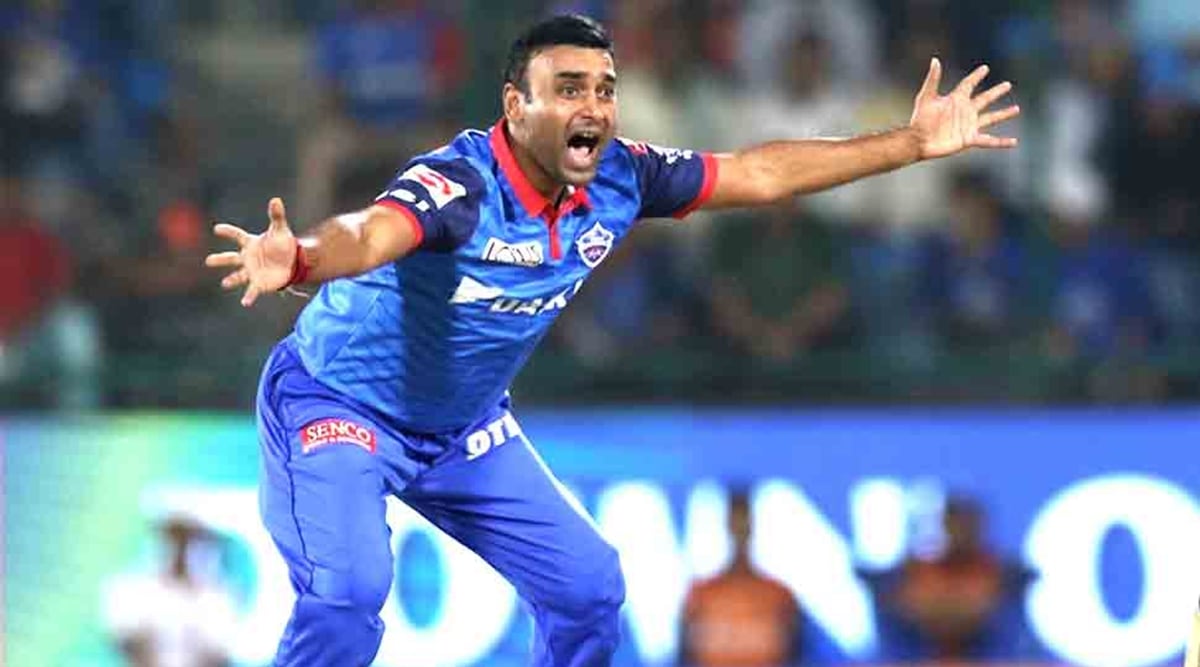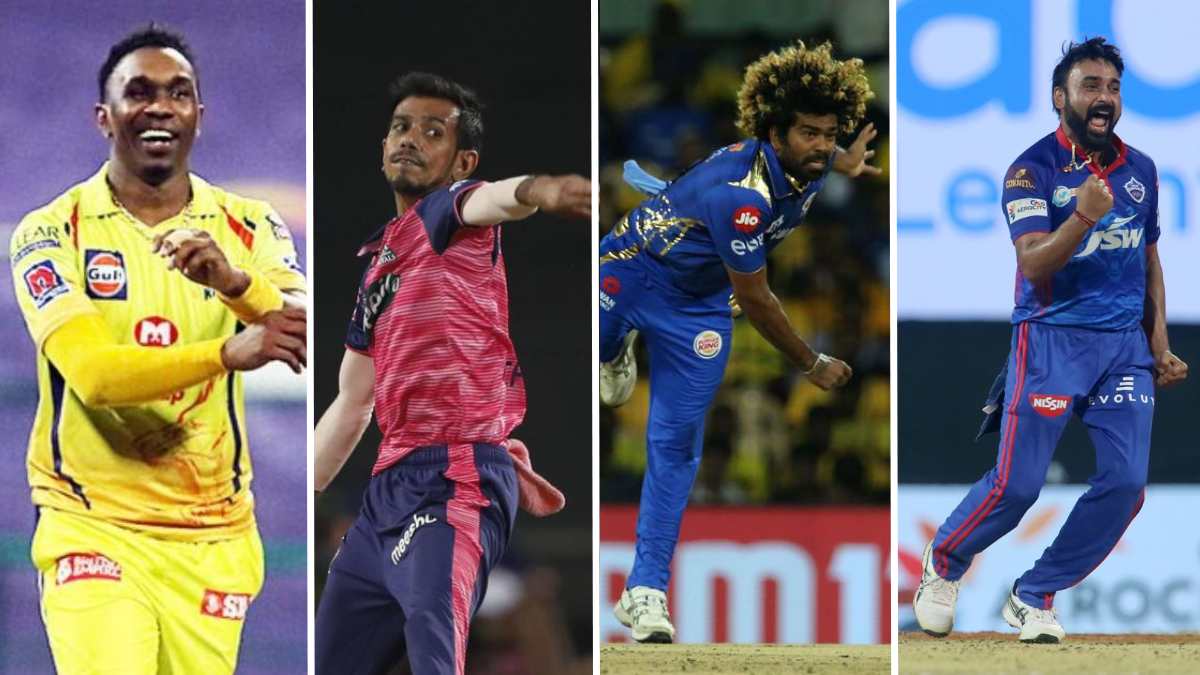Yuzvendra Chahal has emerged as the highest wicket takers in IPL history with an impressive 205 wickets in 160 matches. This remarkable achievement puts him ahead of seasoned veterans like Piyush Chawla, who holds 192 wickets in 192 matches.
The race for most wickets in IPL has been intensely competitive, with stalwarts like Dwayne Bravo (183 wickets), Bhuvneshwar Kumar (181 wickets), and the duo of Sunil Narine and Ravichandran Ashwin (180 wickets each) showcasing their bowling prowess. Notably, the 2023 season witnessed Mohammed Shami claiming the Purple Cap with 28 wickets in 17 matches.
As we approach the 18th edition of IPL starting March, 2025, these bowling statistics reflect not just numbers but the evolution of tactical mastery in cricket’s most competitive league. We’ll dive deep into . highest wicket takers in IPL history.
Yuzvendra Chahal: The New King of IPL Wickets

Image Source: Rajasthan Royals
From chess player to cricket sensation, Chahal’s rise as highest wicket takers in IPL history.
Chahal’s Journey to 205 IPL Wickets
Starting with Mumbai Indians, Chahal found his rhythm at Royal Challengers Bangalore, specifically during the 2014 season. Furthermore, his consistent performances led to remarkable achievements, including winning the Purple Cap in 2022 with 27 wickets in 17 matches at an impressive average of 19.51. His journey reached new heights at Rajasthan Royals, where he claimed 66 wickets in 46 games.
Chahal’s Bowling Strategy and Variations
Chahal’s bowling arsenal includes:
- Two distinct googly variations – one closer to the head and another with side-arm delivery
- Strategic pace variations ranging from mid-70s to low 90s
- Masterful use of drift to push the ball towards the batsman’s blind spot
Additionally, his bowling smarts set him apart, maintaining the best strike rate (16.9) among spinners with 100+ IPL wickets. Consequently, his ability to vary speeds without compromising on surface zip makes him particularly effective on all types of pitches.
Read More => Top 10 Highest Score in IPL History
Dwayne Bravo’s Legacy of 183 Wickets

Image Source: NDTV Sports
With 183 wickets in 161 matches, Dwayne Bravo stands as one of IPL’s most successful bowlers. His journey showcases exceptional death bowling expertise and tactical innovation.
Bravo’s Death Bowling Mastery
Bravo mastered the art of death bowling through precise yorker execution. His medium-pace deliveries proved lethal, especially in pressure situations. Moreover, he developed multiple yorker variations, bowling them effectively from both over and around the wicket. His best bowling figures of 4/22 reflect his ability to dominate crucial phases of matches.
Evolution of Bravo’s Bowling Techniques
Throughout his IPL career, Bravo adapted his bowling arsenal to include:
- Pin-point yorkers as defensive weapons
- Off-cutters and slower bouncers
- Back-of-the-hand slower deliveries
- Round-the-wicket variations to right-handers
Subsequently, his bowling averages improved significantly, reaching his peak in 2013 with 32 wickets at an impressive average of 15.53. His economy rate of 8.38 across all IPL matches demonstrates his consistent performance under pressure.
Lasith Malinga’s Yorker Excellence

Image Source: Mumbai Indians
Known for his distinctive round-arm action, Lasith Malinga stands with third highest wicket takers in IPL history with 170 wickets.
Malinga’s Unique Bowling Action
His horizontal bowling action, initially developed from playing with tennis balls, created a unique advantage in professional cricket. Essentially, this technique allowed him to maintain a fixed elevation from the ground throughout his arm swing, resulting in exceptional yorker accuracy. The physics behind his action provided multiple benefits:
- Reduced arm arc for quicker release
- Enhanced seam movement and reverse swing
- Precise control at the base of stumps
- Minimized strain on shoulder and elbow
Analysis of Malinga’s Best Spells
His most remarkable performance came in 2011 when he claimed 5/13 against Delhi, his only five-wicket haul in IPL. Meanwhile, his death bowling mastery shone through in the 2019 final, where he defended 9 runs in the last over. Throughout his career, Malinga maintained an impressive average of 19.80 and an economy rate of 7.14.
Amit Mishra’s Spin Wizardry

Image Source: The Indian Express
A master of classical legspin bowling, Amit Mishra stands among IPL’s elite with 174 wickets in 162 matches. His bowling average of 23.84 reflects his exceptional consistency throughout the tournament.
Mishra’s Leg-Spin Variations
Primarily known for his traditional approach, Mishra relies on a sharply spinning leg break as his stock delivery. His arsenal includes:
- A well-disguised googly
- Top spinner with nagging accuracy
- Flight variations with precise loop
- Varied pace ranging from mid-70s to low-90s
Key Performances and Records
Indeed, Mishra remains the only bowler in IPL history to claim three hat-tricks, achieving this feat with different teams – Delhi Daredevils (2008), Deccan Chargers (2011), and Sunrisers Hyderabad (2013). Altogether, his best bowling figures of 5/17 showcase his ability to dominate crucial matches. His remarkable performance against Mumbai Indians in 2021, where he claimed 4/24, demonstrated his enduring skill.
Bhuvneshwar Kumar’s Swing Mastery

Image Source: BDCricTime
Nicknamed the “Swing King,” Bhuvneshwar Kumar’s mastery of moving the ball both ways has earned him 181 wickets in his IPL career.
Kumar’s New Ball Expertise
Primarily known for his devastating inswinger, Kumar’s ability to swing the ball both ways makes him a formidable force in powerplay overs. His economy rate of 5.68 in the first six overs showcases his exceptional control. Currently, his nagging line and length, coupled with his ability to move the ball off the seam, make him a valuable asset in the initial overs.
Evolution as Death Overs Specialist
Formerly a new-ball specialist, Kumar expanded his repertoire to become a complete bowler. His death-over arsenal includes:
- Wide line yorkers with off-side field placement
- Knuckle balls for variation
- Scrambled seam deliveries
- Precise slower balls
Comparison Table
| Bowler | Total Wickets | Matches Played | Best Bowling Figures | Economy Rate | Notable Achievements | Signature Bowling Style/Strength |
|---|---|---|---|---|---|---|
| Yuzvendra Chahal | 205 | 160 | Not mentioned | Not mentioned | Purple Cap (2022) – 27 wickets | Two distinct googly variations; strategic pace variations |
| Dwayne Bravo | 183 | 161 | 4/22 | 8.38 | Two Purple Caps (2013, 2015); 32 wickets in 2013 | Death bowling specialist with multiple yorker variations |
| Lasith Malinga | 170 | 122 | 5/13 | 7.14 | Purple Cap (2011) – 28 wickets | Distinctive round-arm action; yorker specialist |
| Amit Mishra | 174 | 162 | 5/17 | 7.38 | Only bowler with three IPL hat-tricks | Classical leg-spin with well-disguised googly |
| Bhuvneshwar Kumar | 181 | Not mentioned | Not mentioned | 8.00 | Two consecutive Purple Caps (2016, 2017) | Swing bowling mastery; death overs specialist |
Conclusion
These legendary bowlers have shaped IPL’s competitive landscape through their unique approaches and remarkable achievements. Chahal’s rise to become the highest wicket-taker showcases how leg-spin bowling remains a potent weapon in modern cricket. Meanwhile, veterans like Bravo and Malinga have left lasting legacies through their death bowling expertise, now passing their knowledge as bowling coaches to nurture new talent.
Statistical analysis reveals fascinating patterns among these top performers. Though their bowling styles differ significantly – from Bhuvneshwar’s swing mastery to Mishra’s classical leg-spin – each bowler has maintained impressive economy rates while consistently taking wickets. Their success proves that adaptability and strategic thinking matter as much as raw skill in T20 cricket.
Looking at IPL’s evolution over 16 seasons, these bowlers have redefined what’s possible in limited-overs cricket. Their achievements go beyond numbers – they’ve created blueprints for success that future generations will study and build upon. Most importantly, their contributions continue to influence the game, whether through direct coaching roles or through the tactical innovations they pioneered.


